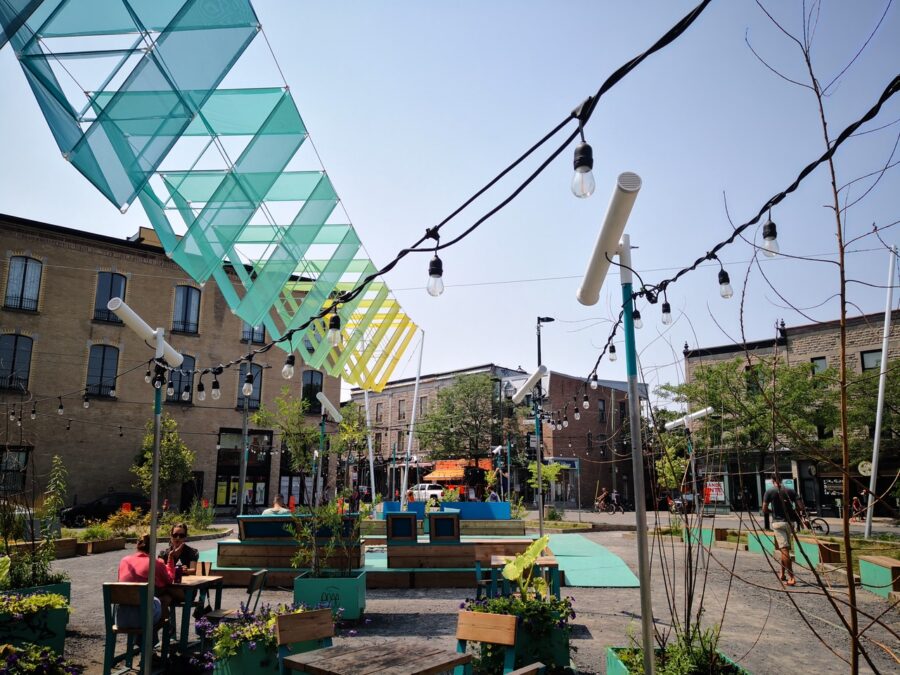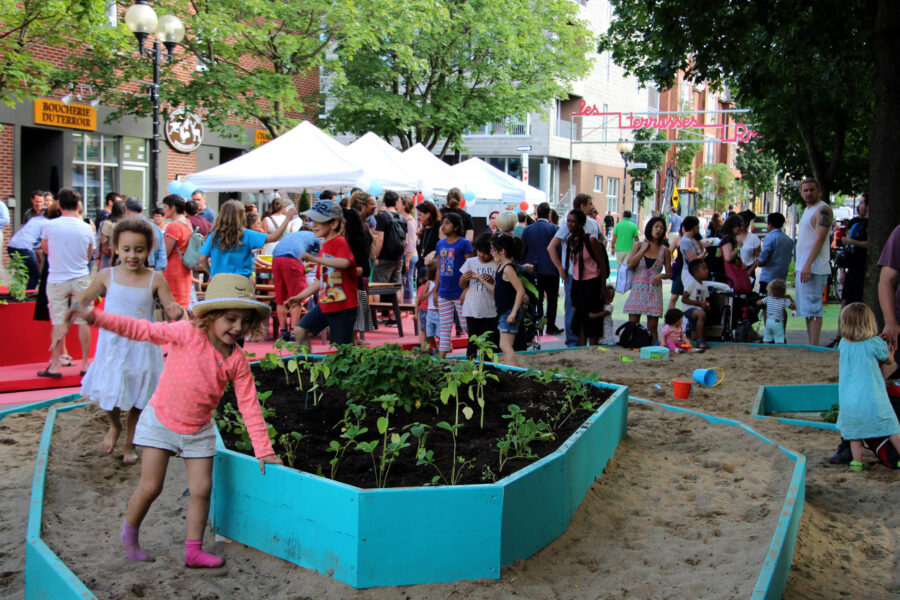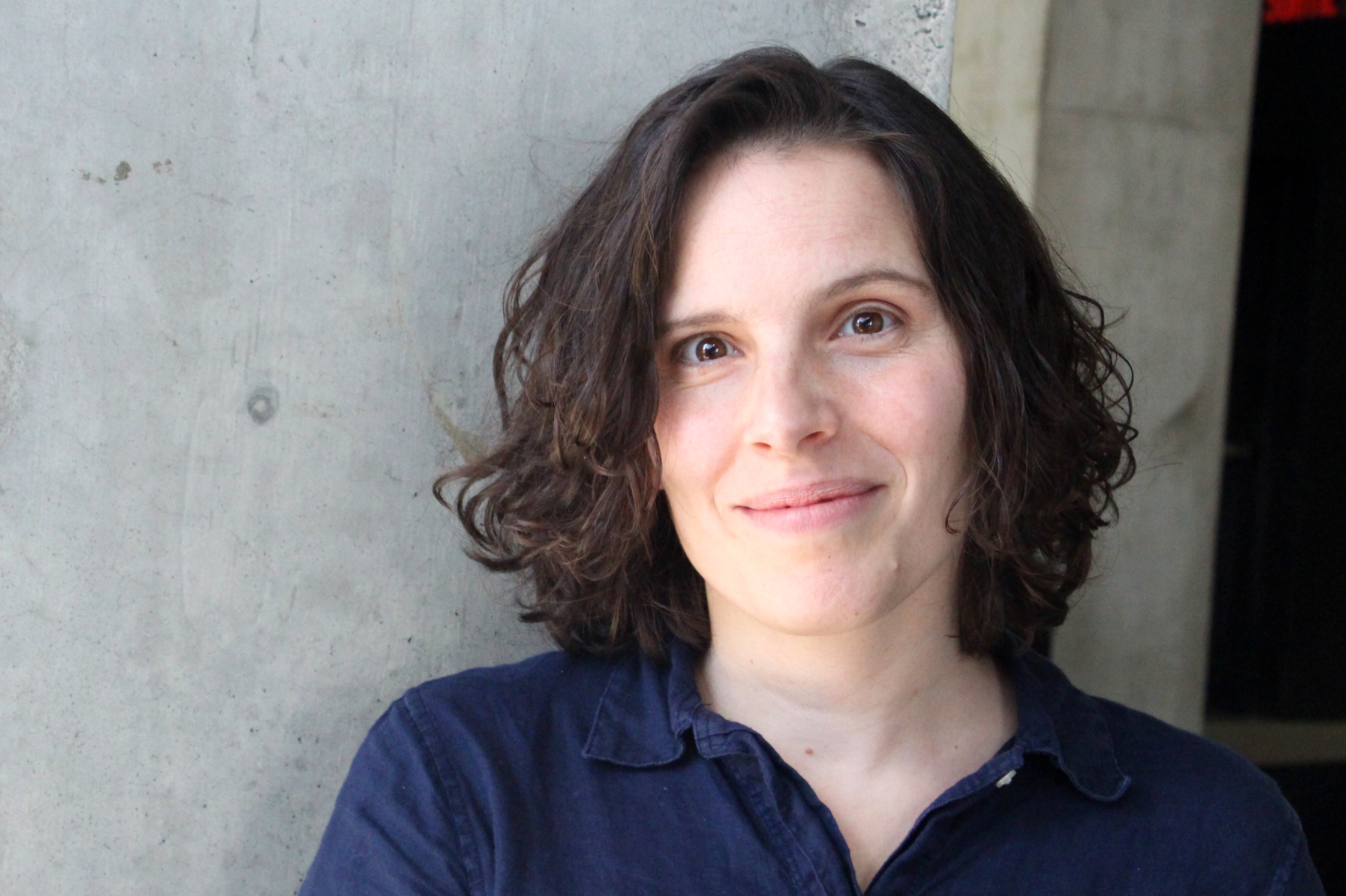9 min. read
Catherine Guastavino is an Associate Professor at McGill University, where she holds a William Dawson Research Chair, and Principal Investigator at the Sounds in the City partnership. Her research interests include soundscape, spatial audio, auditory localisation, multi-sensory perception, and music perception and cognition.
What is the Sounds in the City partnership and what are some of its core objectives ?
I’m a cognitive scientist interested in how we make sense of sounds around us. Everyday sounds, but also music, and other types of special sounds. Sounds in the City is a research partnership bringing together academic researchers, but also professionals who shape our cities, artists, and citizens, to rethink the role of sound in our urban spaces. We are trying to look at solutions to make our cities sound better in order to increase urban wellbeing. We use Montreal as a living laboratory for soundscape research. We work around concrete interventions, where we try and manipulate the soundscape. For example, we try to evaluate the effects of interventions on users in new pedestrianisation projects, or through collaborations with sound artists in public spaces. The objectives are to improve the quality of life of residents and visitors in a better managed, sound aware city.
Sounds really play a critical role in our experience of the city, but today most cities treat sound solely as noise or unwanted sound, a nuisance that should be mitigated when the problem arises. That’s often too late, and there are a number of sounds that can actually support our wellbeing, and contribute to the memories of spaces or the city as a whole. Music, conversation, birds, water sounds can help us focus and make us more comfortable in these spaces.
As you say, cities often focus on noise mitigation, but how can soundscapes have a positive effect on urban health?
Reducing the detrimental effects of noise should certainly be tackled. We absolutely want to avoid these detrimental effects. Another approach however is to go beyond making our cities sound less bad, and strive to make them sound better.
To do so, sound needs to be reconsidered in a more proactive way. We need to reframe sound not just as a nuisance but as a resource in relation to other urban design considerations. From early conception to long term use, sound needs to be taken into account. This method really does away with the implicit assumption that all environmental sounds are negative and looks at the needs of different community users, and what they need to live, work, play or relax in sound environments that they find appropriate. It’s about accounting for these different users, their activities, and the contexts in which they are experiencing sound. All of this has implications for how city makers need to plan and design our urban spaces.
What are Soundmarks, and how could they be better used to create more pleasurable, informative and safer urban environments?
Soundmarks are sounds that are valued by the community. In Montreal, something that is often cited is a TamTams, a drum-circle that takes place every Sunday in the Mont-Royal Park. It’s part of the environment and is perceived as a comforting, weekly presence. Soundmarks also reflect changes over time. After a snowstorm for example, everything sounds muffled and that’s very characteristic of my city and its environment. Soundmarks are very important as they emphasise the positive outcomes and relationship we have with sound that goes beyond what is typically captured in noise policy. This calls for identifying these particular soundscapes to be preserved, as well as for mechanisms to be put in place to make sure that they can be preserved.
In Mont-Royal park for example, there currently is no policy that protects it in terms of the sound environment. It’s amazing to have such a beautiful park in the middle of the city but we have no way to protect its sonic quality. There is a hospital next to it with quite some ventilation, and in some parts of the park it might look relaxing but you can hear this unwanted sound. The idea here is to really approach a place so it reflects the values of the community in a more holistic way by also including sound among all other features.
Current policy and planning rely almost exclusively on noise levels measured in decibels. You support a shift away from purely technical formulas towards a more holistic, integrated approach. Could you expand on this proposal ?
I’m not saying we should get rid of decibels and technical solutions entirely. We need them, but they need to be used as one piece of the puzzle. The sound level is just one feature, it doesn’t say the whole story: if it is an irritable sound, or a pleasurable one for example. It also doesn’t indicate the context you are in while experiencing the sound, whether you are trying to sleep or hanging outside with friends getting a drink. These contextual factors are not taken into account, yet sound is always heard by someone, someplace, doing something. All of this influences the experience of sound. Sound policy should factor in this sensory, contextual experience and what communities actually value in their soundscapes.
We need upper limits of decibel levels to mitigate health risks, and in the areas where we are below, space opens up for creative solutions, identifying which sounds are appropriate for certain activities, which sounds are desirable. It really boils down to sound design for public space, this is what we are aiming for. Of course the first step is getting all urban areas under the level where sound is detrimental.
As I was mentioning, these policies rely on noise control after the fact. This is often too little or too late. If you only deal with sound once the problem arises, the strategies to remediate are often very costly, or cumbersome and not very urban, such as a sound wall. This might do the trick from a technical perspective, but would divide the urban fabric and isn’t ideal from a beautification perspective. Again, thinking about it from the early stages and instead of a siloed approach, integrating it with other planning aspects, considering the end user’s auditory experience throughout.

Traffic noise is among the largest sources of sound pollution. What kind of opportunities arise in terms of sound when traffic is curtailed in certain parts of the city?
Traffic noise is indeed the major source of noise in cities. It affects our stress, sleep, ability to focus. It slowly and steadily consumes years of healthy living. According to the World Health Organisation, in Western Europe only, more than 1 million life years are lost annually due to overexposure to traffic noise, and there is no reason to believe this is different in other regions.
Anything we can do to reduce traffic will have important health benefits, and also ensures that we do not waste precious resources and urban spaces. There are areas in the city that currently might be a nice green space or an area with urban furniture, but due to major roads alongside them and the soundscape that this creates, they are under-utilised. Public transit, cycling and any form of active modes of transportation are an important tool, and their benefits go beyond sound to a more active, healthy way of living. Cycling paths can also act as a buffer between noisy environments and more quiet ones. We often don’t know what to do about such buffer spaces. They might be inadequate for dwelling, yet can be used to connect different locations and possibly provide a limit between areas that need to be quieter and louder.
Certain communities suffer disproportionately from noise pollution, and would benefit the most from healthier soundscapes. How can equity be woven into the quest for better urban soundscapes?
That’s an excellent point. There indeed exists distributive environmental injustice with regards to noise pollution. People with lower socio-economic status are exposed to higher noise levels. Historically, minority communities have also been subject to more stringent sound policing and have been more exposed to the sounds of construction, roadways, and airports. The fact that this hasn’t really been considered until quite recently means that we have put permanent infrastructure in place without sound in mind and this has adverse effects on health, the environment, and social justice.
One of the reasons why is that communities have been left out of discussions regarding noise policy in urban planning, so we are trying to make sure whenever we work on soundscape interventions that we include different stakeholders so we can better understand their perspectives and reconcile them. Urban noise is really a social balancing act, there are often conflicting needs that different city users will have and minimising conflicts is crucial.
Once again, this has mostly been looked at through the prism of noise mitigation. Another way to look at this is in terms of access to high quality soundscapes, what we call restorative soundscapes, that we can go to and seek refuge: greater access to nice, quieter parks for example. We should be doing more both to minimise the negative outcomes of noise pollution but also to promote the more positive outcomes of certain spaces. There is evidence that if you are in a high quality soundscape, people will stay longer, and will interact more with each other. One of my PhD students, Christopher Trudeau, is looking at environmental injustice from the perspective of noise pollution but also access to high quality soundscapes. This can be in public space but also within the home. A project in Europe called the Quiet Side, looked at the effects of having even one room that is quieter. It already makes a huge difference. You can cope with sound much better if you can get away from it and have a safe, protected space. There is of course a lot of room for improvement. Inclusion, diversity and equity are issues that have lately garnered a lot of attention, which is positive.
It’s important to note here that quiet isn’t the ultimate goal. We witnessed this during the pandemic, when people actually thought it was too quiet and eerie. We conducted a survey during the first lockdown and found that people were happy about traffic noise reduction but they missed the sound of human activity. It sounded like the middle of the night in the middle of the afternoon. Quiet isn’t necessarily good: you want the right sounds to be there and the undesirable to be removed. In terms of raising awareness, that’s something we learned during COVID-19.
How do you think the relationship between urban soundscapes and community health could be better used as an argument to promote pedestrianisation and pro-cycling policies?
It’s a challenge in terms of governance, as there is an interdependency between sound and other factors such as mobility, sustainability etc. The decisions that are made about bicycles, shared streets or traffic networks for example will all have an effect on the sound environment. The problem is that currently sound is considered in isolation, and not in the coherent planning strategy. It’s also considered as an afterthought, especially in North America. In Europe there are more proactive endeavours that are seeking to address sound in urban environments.
We are working closely with municipal governments such as the city of Montreal, but also with the provincial government, with the Ministry of Health and Environment. The goal is to try and see how this can be made into an integrated policy that considers sounds in relationship to urban planning and environment, but also administered across the municipal, provincial and federal levels. Policymakers and decision makers are realising the extent of the problem and starting to work together more. As a result, there are a number of exciting initiatives that are trying to approach sound from this holistic and proactive way.
Further Reading:
Steele, D., Bild, E., Tarlao, C., & Guastavino, C. (2019). Soundtracking the public space: outcomes of the Musikiosk soundscape intervention. International journal of environmental research and public health, 16(10), 1865 (open access: https://www.mdpi.com/
Trudeau, C., & Guastavino, C. (2021). The environmental inequality of urban sound environments: A comparative analysis. Proceedings of the International Commission on the Biological Effects of Noise. International Commission on the Biological Effects of Noise, Stockholm, Sweden 14-17 June.


